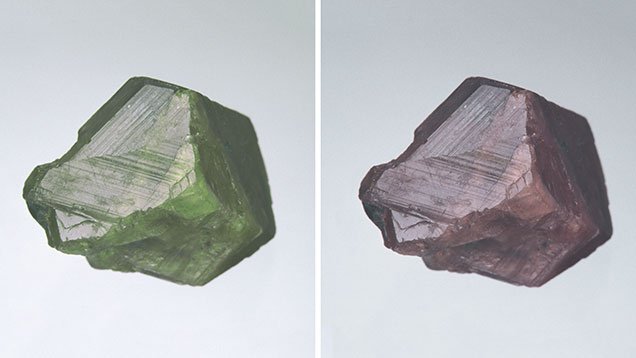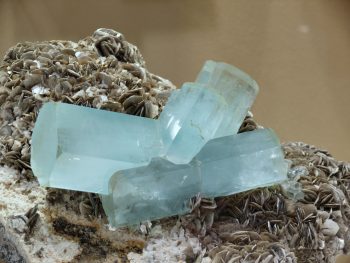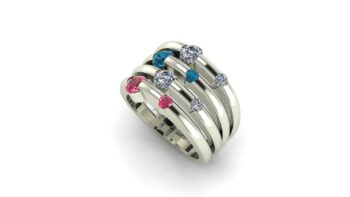Lab Created Alexandrite vs Natural: what are the differences? Is one better than the other? Where can I find natural alexandrite? For some reason, alexandrite is one of those gemstones that causes people to ask questions. It is unclear why though. There are tons of stones out there that come in lab and natural. These include sapphire, ruby, emerald, and even diamonds. However, those stones do not cause the confusion that alexandrite does. We have a couple of ideas as to why though. In this post, we will discuss Lab Created Alexandrite vs Natural. The differences as well as the pros and cons. We will also give you tips to avoid buying lab alexandrite as natural.
Lab Created Alexandrite vs Natural – A Little Education First
Alexandrite is a rare and valuable gemstone that is known for its unique color-changing properties. It was first discovered in the Ural Mountains of Russia in the 1830s and was named after the Russian tsar, Alexander II. The gemstone is a variety of the mineral chrysoberyl and is prized for its ability to change color depending on the lighting conditions. In daylight, alexandrite appears green or bluish-green, while under incandescent light, it can exhibit a reddish-purple hue. This phenomenon, known as the alexandrite effect, makes the gemstone highly sought after by collectors and gem enthusiasts.
The color-changing properties of alexandrite are due to its chemical composition and the presence of trace elements. The gemstone contains chromium, which is responsible for the green color, and when exposed to different light sources, the chromium ions absorb and reflect light in different ways, resulting in the color change. The more intense the color change, the more valuable the alexandrite is considered to be.
In addition to its color-changing properties, alexandrite is also known for its durability and hardness. It has a rating of 8.5 on the Mohs scale, making it suitable for everyday wear. However, due to its rarity, alexandrite is considered a collector’s gemstone and is often used in high-end jewelry pieces. Its scarcity and unique beauty make it a highly prized gemstone among collectors and connoisseurs alike.
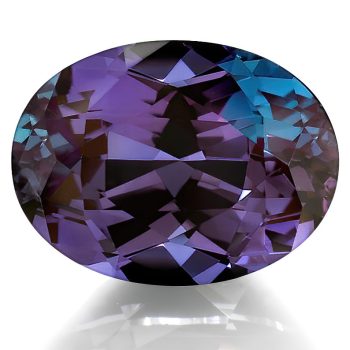
Natural Alexandrite
Natural alexandrite is a rare and highly sought-after gemstone. It is known for its remarkable color-changing properties, displaying hues of green in daylight and transforming into shades of red under incandescent light. This unique phenomenon is due to the presence of chromium and iron in the gemstone’s crystal structure. The color change is often described as “emerald by day, ruby by night,” making natural alexandrite a truly captivating and mesmerizing gem.
In addition to its enchanting color-changing abilities, natural alexandrite is also valued for its exceptional hardness and durability. With a rating of 8.5 on the Mohs scale, it is considered a relatively hard gemstone, making it suitable for everyday wear. Its high refractive index and strong dispersion further enhance its brilliance and sparkle, adding to its overall allure.
Due to its rarity and beauty, natural alexandrite is highly prized by collectors and gem enthusiasts. It is often regarded as one of the most valuable and desirable gemstones in the world. However, its scarcity and limited availability contribute to its high price tag. Natural alexandrite is predominantly found in Russia, Brazil, and Sri Lanka, with Russian stones being particularly renowned for their exceptional quality.
Whether you are a gemstone enthusiast or simply appreciate the beauty of rare and unique gems, natural alexandrite is a gemstone that truly stands out. Its mesmerizing color-changing properties, combined with its durability and rarity, make it a true treasure in the world of gemstones.

Lab Created Alexandrite
Lab created alexandrite is a synthetic gemstone that possesses the same chemical composition and physical properties as its natural counterpart. It is created through a process called hydrothermal synthesis, where a combination of aluminum, beryllium, and other trace elements are subjected to high temperatures and pressures in a laboratory environment.
One of the most popular aspects of lab created alexandrite is its color-changing ability. Like natural alexandrite, the lab created version exhibits a remarkable phenomenon known as pleochroism, where it appears green in daylight and red under incandescent light. However, it is much stronger than in most natural stones. This unique characteristic has made lab created alexandrite a popular choice for jewelry enthusiasts who appreciate its beauty and versatility.
In addition to its aesthetic appeal, lab created alexandrite offers several advantages over its natural counterpart. It is more affordable, as the cost of production is significantly lower than mining and extracting natural alexandrite. Furthermore, lab created alexandrite is free from the ethical concerns associated with mining, making it a more sustainable and environmentally friendly choice.
One common method used to create alexandrite simulants is the hydrothermal process. This involves growing crystals in a high-pressure, high-temperature environment that mimics the conditions under which natural alexandrite forms. By carefully controlling the composition and conditions of the growth process, scientists are able to produce synthetic crystals that closely resemble the color-changing properties of natural alexandrite.
Another technique used to create alexandrite simulants is the flux method. This method involves dissolving the necessary chemical components in a flux material, which is then heated to form crystals. By carefully manipulating the temperature and composition of the flux, scientists are able to produce synthetic crystals with similar optical properties to natural alexandrite.
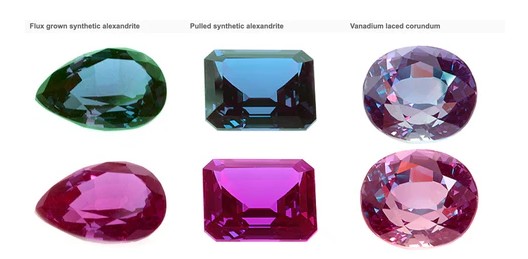
Alexandrite Simulants
You will also see lab color change corundum (think ruby and sapphire) that is also sold as lab alexandrite. Color change corundum is also known for its remarkable ability to change color under different lighting conditions. While both gemstones exhibit this unique characteristic, there are some key differences between them.
Color change corundum, also known as color change sapphire, is a variety of the mineral corundum. It is typically blue in daylight or fluorescent light, but can change to a purplish-red or violet color under incandescent light. This color change phenomenon is due to the presence of trace elements such as chromium and vanadium in the crystal structure of the gemstone. It is also less expensive than lab alexandrite. Unfortunately, the only way to tell the difference is to check the RI.
How To Tell The Difference Between Lab Created Alexandrite vs Natural
Lab created Alexandrite and natural Alexandrite can look very similar, but there are a few key differences that can help you tell them apart. One way to distinguish between the two is by examining their color change. Natural Alexandrite typically exhibits a less dramatic color change, ranging from green in daylight to red under incandescent light. Lab created Alexandrite, on the other hand, may have a more pronounced color change or even a more limited range of colors. Another clue to look for is the presence of inclusions.
Natural Alexandrite often contains inclusions, which are small imperfections or foreign materials trapped within the gemstone. Lab created Alexandrite, being grown in a controlled environment, is generally free from inclusions. Lastly, consider the price. Natural Alexandrite is extremely rare and valuable, making it significantly more expensive than lab created Alexandrite. By paying attention to the color change, presence of inclusions, and price, you can confidently tell the difference between lab created Alexandrite and its natural counterpart.
Pros & Cons Of Lab Created Alexandrite vs Natural
Lab created alexandrite is a more affordable option compared to natural alexandrite. It is created in a controlled environment using advanced technology, which allows for a consistent supply. Lab created alexandrite also tends to have a more vibrant and intense color, making it a popular choice for jewelry.
However, one downside of lab created alexandrite is that it is not considered as rare or valuable as natural alexandrite. Natural alexandrite is formed over millions of years under specific geological conditions, which makes it extremely rare and precious. It is also known for its color-changing properties, which can vary depending on the lighting conditions.
Basically, both lab created alexandrite and natural alexandrite have their own advantages and disadvantages. It ultimately comes down to personal preference and budget. Whether you choose the affordability and consistency of lab created alexandrite or the rarity and value of natural alexandrite, both options can provide you with a stunning and unique gemstone.
Cost
Lab created alexandrite and natural alexandrite differ in cost due to their origin and rarity. Lab created alexandrite is grown in a laboratory, and its production can be controlled, resulting in a more affordable price compared to natural alexandrite. Natural alexandrite, on the other hand, is formed under specific geological conditions, making it rare and expensive. High quality natural stones can cost in the thousand of dollars per carat. While lab created alexandrite offers a more budget-friendly option, some individuals prefer the uniqueness and value associated with natural alexandrite. But unfortunately, nice natural stones are beyond the budget of most buyers.
Ethical Implications
Lab created Alexandrite is a synthetic gemstone that possesses the same chemical composition and physical properties as natural Alexandrite. It is created in a laboratory using a process called the flame fusion method. This method involves melting together various chemical elements and then cooling them rapidly to form a crystal. The result is a gemstone that is visually indistinguishable from its natural counterpart.
One of the main advantages of lab created Alexandrite is its affordability. Natural Alexandrite is an extremely rare gemstone, making it highly valuable and expensive. Lab created Alexandrite, on the other hand, can be produced in large quantities, making it more accessible and affordable for consumers.
Another advantage of lab created Alexandrite is its ethical implications. The mining of natural gemstones often involves environmental degradation and human rights abuses. By choosing lab created Alexandrite, consumers can enjoy the beauty of this gemstone without contributing to these issues.
The Bottom Line
The choice between the two will most likely come down to your budget. Natural stones can cost 100 times what a lab stone costs. Either way, you will be getting one of the more phenomenal stones on the planet. We love color change, asterism, chatoyance, etc! We find phenomenal stones to be underused and would love that to change.
Click here to see our custom engagement ring or our custom pendant portfolio. Then, contact us for an alexandrite ring or pendant!
